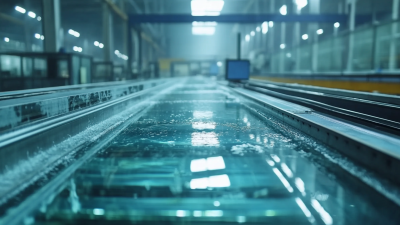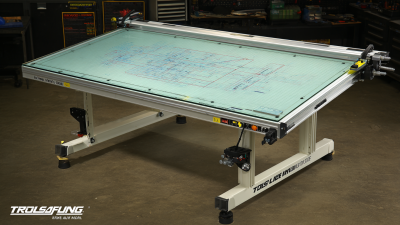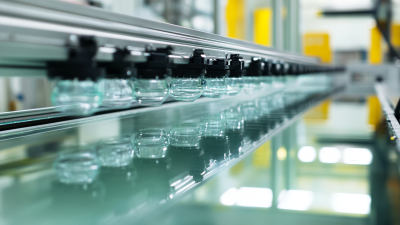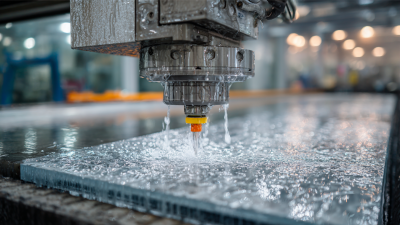The Ultimate Guide to Understanding Glass Processing Machines in Modern Manufacturing
In the realm of modern manufacturing, the Glass Processing Machine stands out as a pivotal player in enhancing efficiency and precision across various industries. As the demand for high-quality glass products continues to rise, understanding the intricacies of these machines becomes essential for manufacturers looking to stay competitive. This guide aims to demystify the functionalities and advantages of glass processing machines, providing insights that can lead to optimized production processes and superior product quality.
Our exploration will delve into the top five glass processing machines that are revolutionizing the manufacturing landscape. Each machine offers unique features and innovations designed to meet the diverse needs of glass production, whether it be cutting, shaping, or surface finishing. By dissecting these machines, we will uncover how they contribute to increased productivity, reduced waste, and improved safety measures in the workplace. Ultimately, this guide serves as a comprehensive resource for understanding the pivotal role that glass processing machines play in driving advancements in manufacturing technology.
Understanding the Different Types of Glass Processing Machines Used in Manufacturing
In modern manufacturing, various types of glass processing machines are essential for transforming raw glass into finished products. One of the primary types is the glass cutting machine, which utilizes advanced technology to ensure precision cuts while minimizing waste. These machines can vary from simple manual designs to sophisticated automatic systems that facilitate high-volume production, catering to the needs of different industries, including construction and automotive.
Another significant category is the glass drilling machine. This equipment is designed to create holes in glass for various applications, such as decorative purposes or functional installations. Advanced drilling machines often incorporate CNC technology to enhance accuracy and efficiency, making them indispensable in high-quality production environments. Additionally, there are glass tempering furnaces, which are critical for strengthening glass through heat treatment, ensuring durability and safety in applications like shower doors and glass facades. Each of these machines plays a vital role in creating high-performance glass products tailored to the specifications of modern manufacturing demands.
The Ultimate Guide to Understanding Glass Processing Machines in Modern Manufacturing
Key Technologies Behind Glass Processing: A Deep Dive into Machines and Methods
In modern manufacturing, glass processing machines have evolved significantly, integrating advanced technologies that enhance efficiency and precision. Key technologies such as CNC (Computer Numerical Control) machining and automated glass handling systems have transformed traditional methods. A report by MarketsandMarkets estimates that the glass processing machinery market will grow to $10.5 billion by 2026, driven by increasing demand in the architectural and automotive industries. CNC technology allows for intricate designs to be cut and shaped with high accuracy, ensuring consistency in large-scale production.
Another pivotal advancement is the use of laser cutting and edge grinding machines. According to a study by Allied Market Research, the global market for laser cutting machines is expected to reach $5.8 billion by 2024, highlighting their growing prevalence in the glass industry. These machines offer superior speed and precision, reducing waste and enhancing the quality of finished products. Furthermore, integration with software for real-time monitoring and control has added significant value, allowing manufacturers to optimize processes and reduce downtime. The combination of these technologies not only improves production capabilities but also elevates the standards of glass products in terms of both aesthetics and functionality.
Essential Factors to Consider When Choosing Glass Processing Equipment
When selecting glass processing equipment, it's crucial to consider several essential factors to ensure optimal performance and efficiency in modern manufacturing. According to a recent report by Grand View Research, the global glass processing equipment market is anticipated to reach $11.19 billion by 2025, driven by increasing demand in the architectural and automotive sectors. This growth highlights the necessity of investing in the right machines to enhance productivity and meet industry standards.
One tip for choosing the right equipment is to evaluate the machine’s energy efficiency. Energy-efficient machines not only reduce operational costs but also minimize environmental impact, aligning with industry trends towards sustainability. Additionally, reviewing the technological advancements, such as automation features and integration capabilities with existing systems, can significantly boost overall production efficiency.
Another aspect to consider is the level of post-purchase support and servicing offered by manufacturers. A report from IBISWorld indicates that companies consider after-sales support as a critical factor, with 70% of manufacturers emphasizing its importance in their purchasing decisions. Ensuring that you have access to reliable maintenance services can prolong the lifespan of your equipment and improve reliability in production processes.
Maintenance Tips for Maximizing the Lifespan of Glass Processing Machines
Maintaining glass processing machines is crucial for maximizing their lifespan and ensuring optimal performance in modern manufacturing. According to a recent report by the Glass Association, well-maintained machinery can extend operational life by up to 30%, significantly reducing downtime and repair costs. Regular maintenance not only keeps the machinery running efficiently but also enhances product quality by minimizing defects caused by wear and tear.
Tip 1: Develop a routine inspection schedule. Regularly checking components such as cutting tools, wheels, and belts can help identify potential issues before they escalate into more significant problems. Inspecting and replacing worn parts promptly can lead to better production outcomes and consistent quality.
Tip 2: Keep the work environment clean. Dust and debris can interfere with machine performance and lead to premature wear. Implementing a daily cleaning protocol can keep machines in top condition, as stated in the manufacturer’s best practices guide.
Attention to these maintenance tips can lead to a more efficient production line and safeguard your investment in glass processing technology, aligning with industry standards for sustainable manufacturing practices.
Future Trends in Glass Processing Technology: What Manufacturers Need to Know
The glass processing industry is on the brink of a technological revolution, driven by the need for efficiency, precision, and versatility in manufacturing. One of the most significant trends reshaping the future of glass processing technology is the integration of automation and robotics.
These advancements allow for enhanced speed and consistency in operations, dramatically reducing labor costs and minimizing human error. As manufacturers adopt these technologies, they also gain the ability to collect and analyze data in real time, leading to improved decision-making and greater operational efficiency.
Another emerging trend is the emphasis on eco-friendly practices and sustainability in glass processing. Manufacturers are increasingly focusing on reducing waste and energy consumption throughout the production cycle. This includes the adoption of energy-efficient machines and recycling initiatives designed to minimize environmental impact.
Additionally, innovations such as digital glass cutting and smart manufacturing processes are allowing companies to produce custom glass products on-demand, further enhancing flexibility and reducing inventory costs. Embracing these trends is essential for manufacturers aiming to remain competitive and responsive to the evolving demands of the market.

Home
About Us
Products
UPVC PVC Window Machine
Aluminum Window Machine
Glass Cutting Machine
Glass Edging Machine
Insulating Glass Machine
Glass lifting machine
Glass Washing Machine
Glass Laminating Machine
Glass Sandblasting Machine
Glass Drilling Machine
CNC Glass Working Center
CNC Non-Metal Cutting Machine
The Other Glass Machinery
Application
Download
News
Contact Us






